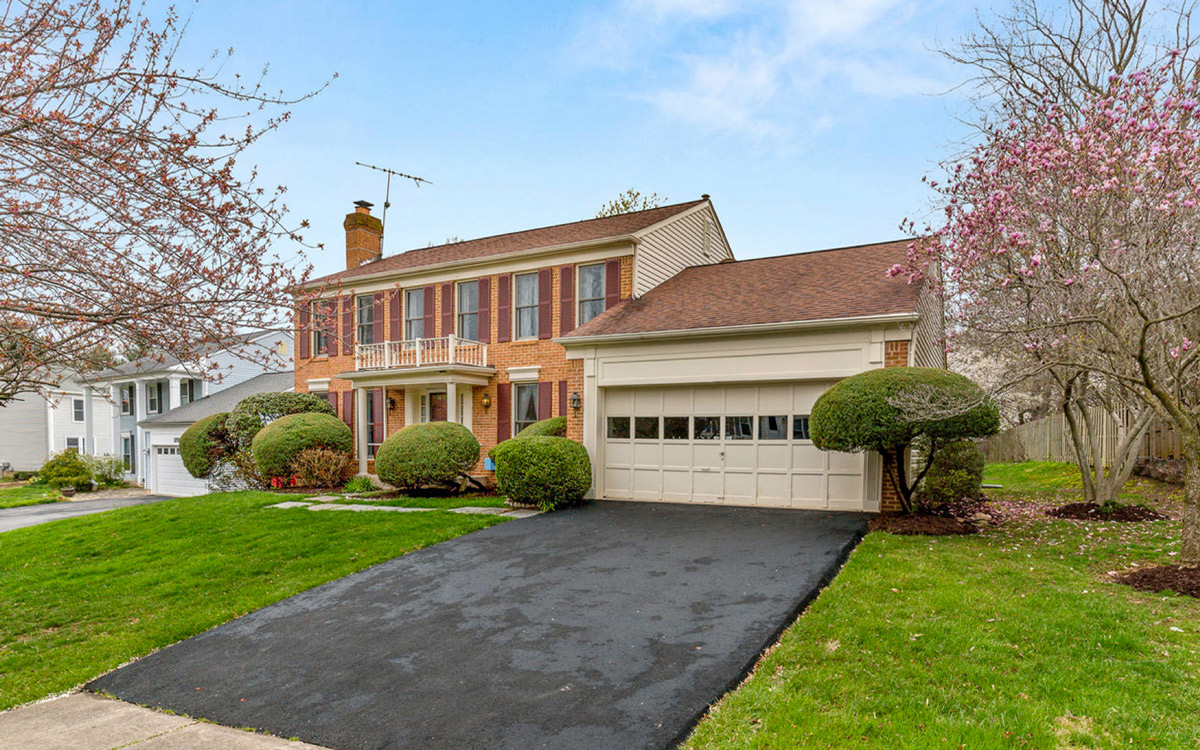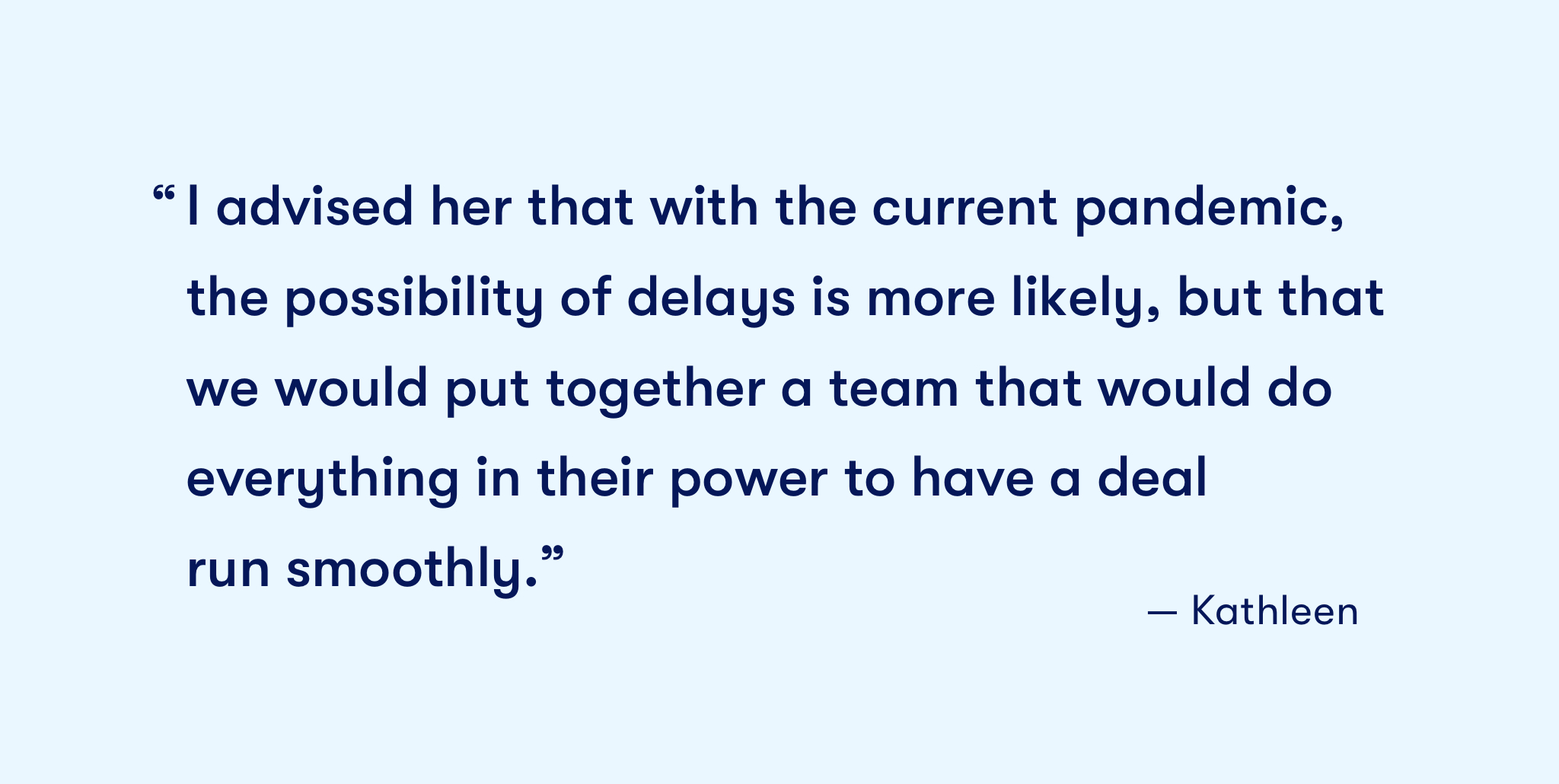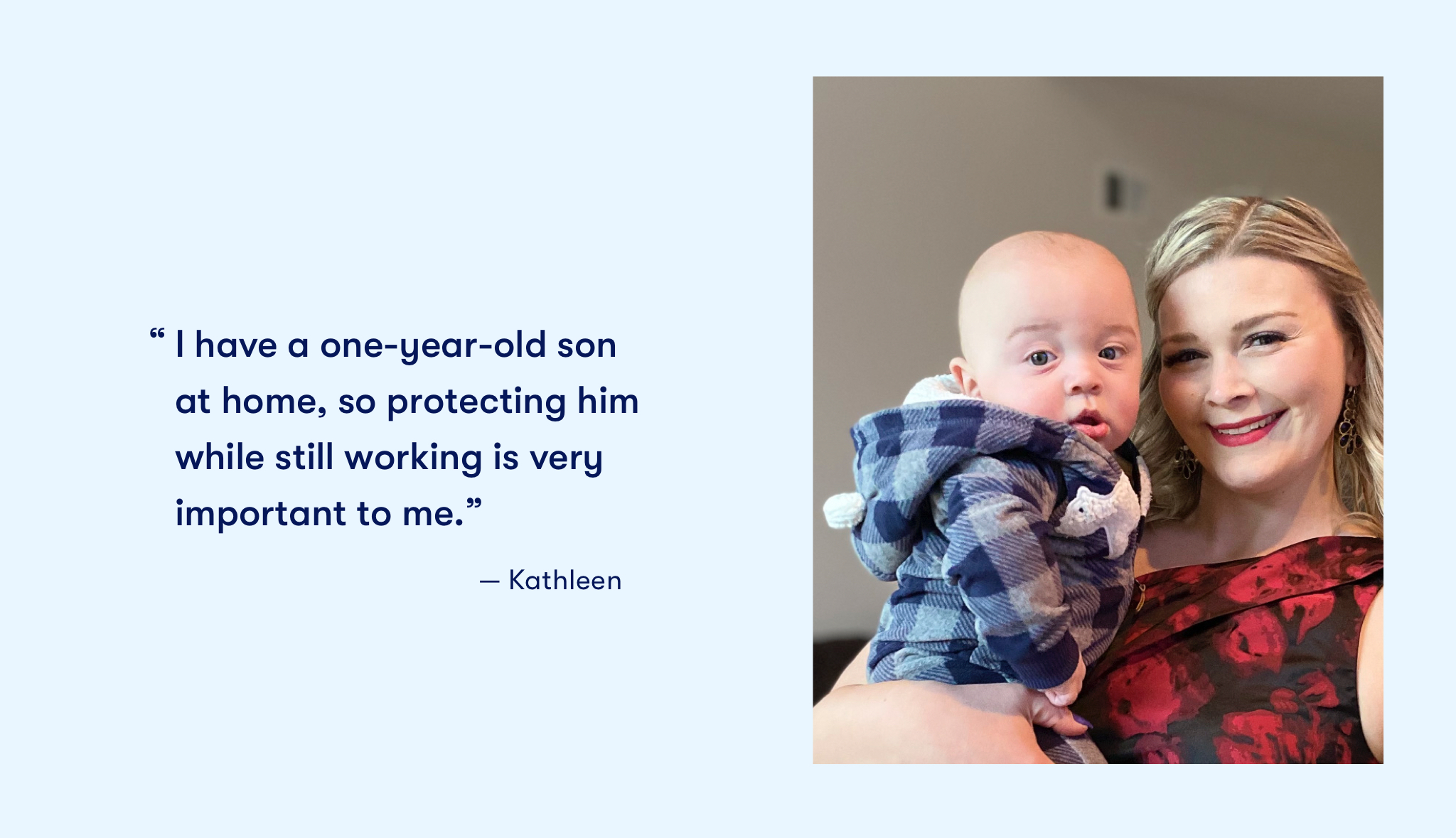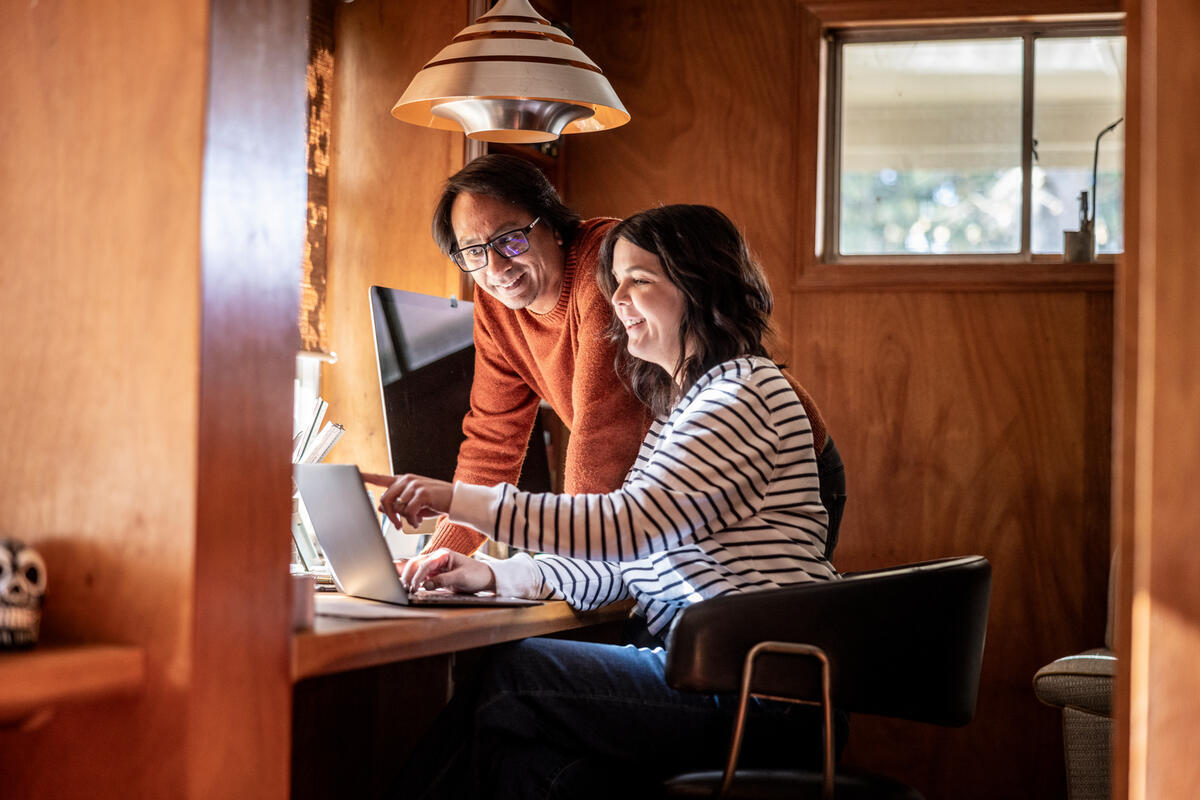From Renter to Homeowner in the Time of Covid
See how first-time buyer Tina Yang navigated the "new normal" of buying with her resourceful agent (and plenty of Lysol wipes).


Written by Susan Kelleher on October 7, 2020
Tina Yang’s journey from renter to homeowner started out typically enough.
It was early 2020, and the 30-year-old health care worker from Silver Springs, Maryland, had been browsing homes online for a few months and popping into open houses on weekends to get a feel for the kind of house she might want.
In March, spotting what appeared to be a great deal in a neighborhood she loved, Tina contacted a real estate agent. By the time she’d made an appointment to tour the house, the coronavirus had exploded in the United States, plunging the economy into turmoil and upending the norms of buying and selling homes.
Tina expected a messy slog to the finish. To her surprise, the transaction went so smoothly that she thinks buying in the time of COVID-19 might have streamlined the process.
“I was worried that COVID would complicate it,” she said, “but I think it made things easier.”
Plenty of buyers have faced unexpected complications while trying to move or purchase a home during this tumultuous time, but it’s also clear that COVID-19 has accelerated innovation in the industry, and shown that — when it comes to real estate — people who want to move will find a way.
Here’s how Tina did it.
The search begins
Tina started as a typical first-time buyer, thinking about her monthly rent payment and wondering if it made more sense to put that money toward a home she could grow into for years to come.
A disciplined goal-setter, Tina boosted her monthly savings toward a down payment, and pared down her belongings to reduce the eventual hassles and cost of moving.
By the end of 2019, Tina was browsing homes online to get a sense of what was out there and what she could afford. Once she’d narrowed her search, she began attending open houses in her favorite neighborhood in Rockville, Maryland.
Although coronavirus was in the news, it felt far off until Tina’s fifth or six open house; when she pulled up to tour it, a sign announced that the showing was canceled.
Tina quickly set her sights on another home in the same neighborhood. She contacted real estate agent Kathleen Martin through Zillow, and they arranged to tour it the next day.
“Her search was for a home that would give a good amount of equity after some renovations, or a home that was priced well and move-in ready,’’ Martin said. “We had a broad range of what could work for her, which is nice in a low-inventory market like ours.”
Suddenly sanitizing
By then, Maryland’s governor had declared a state of emergency around COVID-19, issuing stay-at-home orders and ordering non-essential businesses closed. Tina and Kathleen toured the house the first day it was listed, but only after Kathleen gave a rundown of the CDC’s safety protocol.
Keeping their distance, the pair donned gloves — the CDC had not yet recommended masks — and waited outside until it was their turn to tour the house alone. Kathleen led the way, wiping down surfaces with Lysol wipes as they moved through the house.
“I was able to look at everything I wanted to,’’ Tina said. “I didn’t feel like I was rushed at all.” But she was under pressure to make an offer by the seller’s deadline of 5 p.m. the next day. She bid above the listing price, but lost out to another buyer.
Persistence after disappointment
It took some time for Tina to reset expectations and open herself to other options. She considered another house a street away from the one she bid on, but shied away because of the extensive work the house needed. She kept looking -- and the shocks to the economy from the health crisis continued.
Interest rates dropped, and people rushed to refinance existing mortgages, overwhelming a mortgage industry that was already struggling with remote closings. Also, some of the businesses needed to complete real estate transactions were temporarily closed or scaling back.
“I advised her that with the current pandemic, the possibility of delays is more likely, but that we would put together a team that would do everything in their power to have a deal run smoothly,’’ Kathleen said.

A life transition leads to a sale
Meanwhile, real estate agent Ryan McKevitt in Maryland was working with six sisters from out of town who were helping their mother sell her home in Rockville and move to long-term care. The market had been picking up steam, and Ryan thought it was important to move things along so they could hit their target listing date.
“We had already had a couple hiccups in getting the house cleared out,’’ Ryan said. “There was a leak at one point that I thankfully found when checking on the home, since no one was in state to check on the house. But with COVID on the horizon, it was a whole other animal we knew we were going to face. I was very confident in the market after seeing multiple offers on my other listings and escalating prices just one week earlier, so I knew we had to stay the course.”
They listed the house for sale “as-is,” meaning the seller would not make any repairs to secure a deal.
Tina and Kathleen went to see the house the first day it listed, walking through at a distance and sanitizing as they toured the home. Tina had to decide quickly, as the sisters wanted to field offers the next day.
“I advised her on how to construct the offer to win in a competitive situation,’’ Kathleen said. “There are many ways to make an offer more attractive to a seller aside from the highest price.”
Nine other buyers also wanted the house, but Tina was in a strong position. She had 30% down and qualified for a conventional loan, not the FHA and VA loans that some lenders had put on pause. Tina offered $30,000 over the list price and waived all contingencies, a risky strategy but one she felt comfortable with since the house had been well-maintained.
Five days later, she learned the sisters had accepted her offer.
“I was so relieved,” she said. “I can finally put money toward something I can keep later on.”

Closing the deal at a distance
Kathleen guided Tina through the next steps, helping her select a reputable lender and an efficient title company that could move the deal along quickly, despite the closures and public health orders.
“I prepared her for a socially distant closing where I would not be allowed to attend,’’ said Kathleen. “Fortunately, technology allowed me to give her guidelines on what to expect at closing and provide the important reminders I typically give in person.”
Kathleen said she and Tina met only once after the offer was accepted — for the final walkthrough. Everything else was done through email, text, money wiring and DocuSign.
Ryan, the seller’s agent, said closing was the toughest part.
“We had to try out this e-notary for the first time ever,’’ he said. “We switched e-notaries multiple times because they were so new. We needed to find ways to make the process smoother.”
Because the sisters wanted the sale proceeds to go toward their mother’s long-term care, they also needed an exemption from the state comptroller to avoid paying 8% in fees on the sale price.
“With everything being closed this was delayed,’’ Ryan said, “but we ultimately prevailed in the end. Not a single sister had to come into town for closing.”

Reflecting on the process
For Ryan, the transaction supported his firm belief that real estate will be an important part of the nation’s economic recovery.
“There was more anxiety and uncertainty, but we had great sellers, lenders, title attorneys and a great buyer, and two great agents that made it all go through with little to no issue,’’ he said. “I have always been, and continue to be confident in buying and selling real estate. I truly believe real estate will be the top driving force to help bring this economy back to life.”
For Kathleen, helping buyers during COVID-19 has been similar in most ways to previous transactions with one big exception: safety. Initially nervous to show homes, Kathleen said she grew increasingly confident by following safety rules.
“I have a one-year-old son at home, so protecting him while still working is very important to me,’’ she said. “The more homes I showed and clients I met with, who all diligently practiced the CDC guidelines, the more comfortable I became. Masks, gloves and disinfectant wipes quickly became my most important showing tools and like second nature. I was never worried our transaction would not close.”
And, she said, taking those steps into the unknown was absolutely worth it.
“I was so happy for my client when she closed,’’ she said. “She was thrilled with the home, and to me there is no better feeling than a client’s happiness at closing. To know I helped them move forward in life, especially at a time like this, is every reason I do this job and means the world to me.”
Kathleen took advantage of technology one last time after the sale: to send Tina a gift card to buy something for the home.
Asked how she felt about her new home, Tina said, “Now I have a project I can keep improving forever.”
Spoken just like a homeowner.
How much home can you afford?
At Zillow Home Loans, we can pre-qualify you in as little as 5 minutes, with no impact to your credit score.
Zillow Home Loans, NMLS # 10287. Equal Housing Lender
Get pre-qualifiedA great agent makes all the difference
A local agent has the inside scoop on your market and can guide you through the buying process from start to finish.
Learn more


